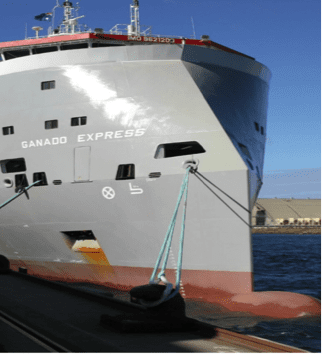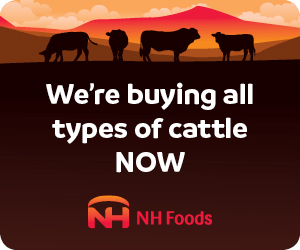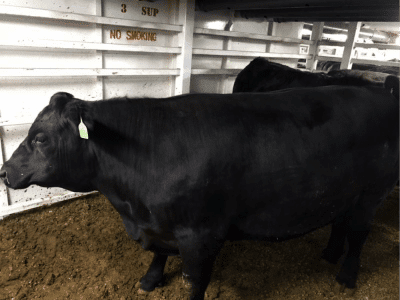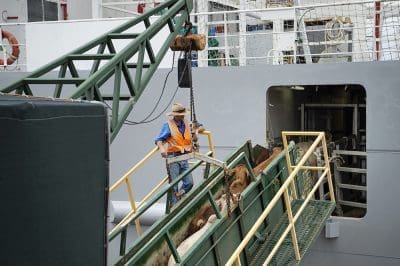UNTIL late this morning, new rules requiring exporters to reduce stocking densities on cattle shipments by as much as 14 percent compared to previous limits were set to take effect from tomorrow.
Reducing the number of stock that can be loaded on future live export shipments was a key recommendation of the review of the Australian Standards for the Export of Livestock (ASEL) for sea transport completed earlier this year.
The Federal Government had originally committed to implementing the recommendation by May 1, 2019.

However, given the size of the changes to be implemented, that was pushed back to mid May, and then again to June 1, 2019, which is tomorrow.
But in an email sent to the livestock export trade late this morning, the Department of Agriculture has confirmed the order has still not yet been signed, which means the implementation will be delayed beyond tomorrow to an as yet unknown date.
“Until such time as the Order has been signed, all requirements as set out in the Australian Standards for the Export of Livestock (ASEL) version 2.3 remain in place. This includes the pen space area requirements as outlined in the ASEL,” this departmental email advised.
“The department still intends to implement the proposed new pen space area requirements, and we will inform you of the new implementation date shortly.”
When it is implemented, the Order will introduce new pen space area requirements for livestock on board vessels.
For voyages of less than 10 days, exporters with a good track record and high performance on an animal welfare will be able to load cattle at a stocking density based on an allometric “k-value” of 0.027.
For producers who are not able to demonstrate past and continued high performance, and for voyages of greater than 10 days, the allowed stocking density defaults to a lower density k-value of 0.03.
 The new equations translate to potentially significant reductions in allowable stocking densities for some live export shipments.
The new equations translate to potentially significant reductions in allowable stocking densities for some live export shipments.
Estimates provided by some exporters to Beef Central suggest the application of a 0.03 allometric stocking density will equate to a 14 percent reduction in stocking capacity for light steers from Darwin to Jakarta, and a 5.3pc reduction for heavy cattle from Townsville to Vietnam.
Exporters will still face the same fixed costs for each journey, and some have told Beef Central the potential loss of 5-14pc of revenue from each shipment will effectively consume any potential margin in the current tight trading environment.
A number of individual exporters have told Beef Central this will place further pressure on the viability of a trade that is of significant economic and social importance to large sections of rural Australia, and will place downward pressure on farm-gate live export prices, at time when producers are battling severe drought conditions.
The ASEL review committee in its report acknowledged that it could find “little scientific evidence” to indicate that current stocking densities on shorter voyages were a significant risk factor.
“Mortality rates for lighter cattle on shorter voyages are very low,” the committee noted.
A comparison in the report showed a mortality rate of 0.056 percent for the 1.3 million head carried on 423 shorter 10 day or less voyages since 2015, and a mortality rate of 0.169pc for the 1.8 million head exported on 447 longer 10 day voyages over the same time.
The lower mortality rate on shorter voyages was further reflected in the historical mortality rate for one exporter. When expressed as a percentage of animal days at sea, the mortality rate was 0.008 per cent – half that of the Australian Feedlot Industry Standard for short-stay.
However the committee said it remained concerned about relying on mortality data to demonstrate performance of export voyages.
It said broader measures for assessing animal welfare outcomes such as those related to the behavioural implications of space allowances, and the ease with which animals can access feed and water, also had to be considered (p28-29).
Exporters have expressed frustration at the handling of the details of the rule changes by the Department of Agriculture.
 They fear the rules are being introduced without adequate processes to underpin them and being rushed through regardless of their effect.
They fear the rules are being introduced without adequate processes to underpin them and being rushed through regardless of their effect.
The Northern Territory Livestock Exporter’s Association says it supports rule changes that improve animal welfare but it wants the Department to take the time that is needed to get the processes properly in place and not to rush the introduction (see NTLEA comments below).
Exporters were given an unreasonably short time-frame by the Department to respond to the detail of the new rules.
The details were only released on the afternoon of Thursday, May 9 in the DAWR’s “Guidelines for Alternate Pen Space Allocation Applications and Approvals for Cattle on Sea Voyages less than 10 days”.
The industry says it was given only until May 15 – less than one full week – to provide feedback on the guidelines.
The consultation time frame appears to fall well short of the requirements for implementing new regulations set out by the office of Prime Minister and Cabinet, which state “in order for your consultation to be credible and effective, you need to engage with stakeholders in a way that is relevant and convenient for them. You also need to give stakeholders time to consider the information you give them and time to respond.”
Economic modelling of impacts
The ASEL review committee said economic modelling of the impact of the stocking density changes would be, in general, less dramatic for cattle than those for sheep, as the changes in stocking density are not as great.
The biggest changes in stocking density relate to lighter cattle (200 to 350kg) and this affects the feeder cattle trade more than the slaughter trade, the ASEL report said.
Modelling for a short Darwin-Jakarta (Tanjung Priok) voyage (based on 300kg feeder cattle and an allometric stocking rate k-value of 0.027) suggested the space allowance under the new rules would increase by roughly 5 percent.
This would result in a fall in profit margin of 2pc.
“At this level, it could be expected that exporters will pass a proportion of the cost increases back to farmers in the form of lower purchase prices in order to keep an acceptable margin,” the report said.
The reported noted that publicly available data pointed to already tight margins for exporters in the current environment.
The purchase price of light feeder steers ex-Darwin averaged $2.97/kg in 2018, while the average sale price in Indonesia according to Dr Ross Ainsworth’s South East Asia Market Report published in Beef Central is $3.74 per kilo, resulting in a buy-sell spread of $0.77 per kilo.
Using the sea freight information contained in ALEC’s submission, the cost to ship an animal is $132, or $0.44 per kilo for a 300kg steer.
This leaves a margin for the exporter of $0.33 per kilo to cover land transport, time in registered premises, veterinary expenses, wharfage, stevedoring expenses, fodder costs, stockperson, regulatory costs (for example, independent observer), and overhead costs (for example, finance, insurance and administration).
“By the time these expenses are incorporated the net margin is modest.”
Modelling conducted or a Townsville-Vietnam (Vung Tau) journey, listed in report as a journey of more than 10 days (including loading and unloading,) with a k-value of 0.030 applied.
The modelling of cattle weighing 400kg suggested the space allowance would increase of just over 7pc, which would result in a drop in margin of 2-3pc, which the committee considered sustainable.
For lighter weights of around 300kg where the proposed space allowance increases, the result is a much greater 14.2pc reduction in the number of cattle that can be carried.
The liveweight price for live cattle of less than 350kg ex-Townsville in 2018 has been 270 cents per kilogram and this would have to fall to return the export margin to its current level.
“In this scenario, the exporter would have little choice but to reduce the price to farmers.”
Full regulatory impact assessment is needed: NTLEA
The Department has stated it accepts the modelling included in the report as an adequate regulatory impact statement, even though it only included two voyages.
In a statement to Beef Central the Northern Territory Livestock Exporters’ Association said it is concerned a full regulatory impact assessment has not yet been conducted.
 “The Department are confident they will be able to implement and administer this changes effectively with minimal disruption to the trade,” the NTLEA said.
“The Department are confident they will be able to implement and administer this changes effectively with minimal disruption to the trade,” the NTLEA said.
“Having set the 1 June deadline themselves, the Department is responsible for ensuring that they are prepared to administer these changes effectively from the moment they come into force.”
“The NTLEA is concerned that a full regulatory impact assessment has not been conducted and that there is a need to consider the thousands of people affected by drought and recovering from devastating flooding across much of northern Australia.
“These concerns were disregarded by the Department.
“The NTLEA is supportive of improvements to animal welfare across all facets of the industry. However, the impact of regulatory changes such as these must be carefully considered prior to implementation – a process which has been lacking here.”
“We look forward to working with the Department on creating an improved process for the remaining 48 recommendations handed down from the ASEL Review.”



HAVE YOUR SAY